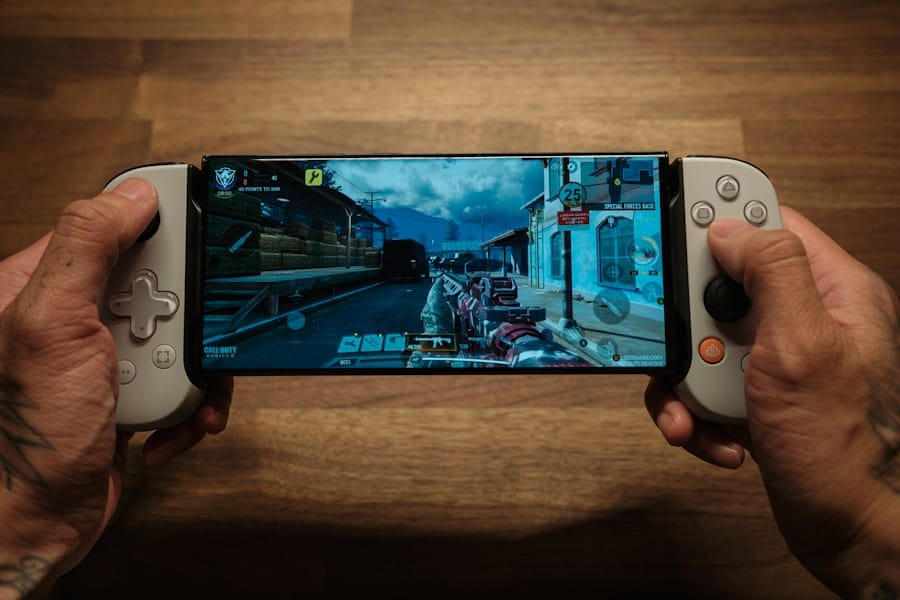Unity has emerged as one of the most popular game development platforms, particularly for mobile game development. Its versatility, user-friendly interface, and robust features make it an ideal choice for both novice and experienced developers. Unity supports a wide range of platforms, including iOS and Android, allowing developers to create games that can reach a global audience.
The engine’s powerful graphics capabilities, coupled with a vast library of assets and plugins, enable developers to bring their creative visions to life with relative ease. Mobile game development, in particular, has seen explosive growth in recent years. With the proliferation of smartphones and tablets, the demand for engaging and innovative mobile games has skyrocketed.
Developers are now tasked with creating experiences that not only entertain but also captivate users in a crowded marketplace. Unity’s capabilities allow for the integration of advanced features such as augmented reality (AR) and virtual reality (VR), further enhancing the potential for immersive gameplay. As we delve deeper into the process of mobile game development using Unity, we will explore the essential steps that can lead to the successful creation of a mobile game.
Key Takeaways
- Unity is a popular platform for mobile game development, offering powerful tools and a user-friendly interface.
- Setting up Unity for mobile game development requires installing the necessary software and configuring the development environment.
- Designing game assets and user interface elements is a crucial step in creating an engaging mobile game.
- Programming game mechanics and interactions using Unity’s scripting language is essential for bringing the game to life.
- Testing and debugging your mobile game is important to ensure a smooth and enjoyable user experience before publishing it to app stores.
Setting Up Your Unity Development Environment
To embark on your mobile game development journey with Unity, the first step is to set up your development environment. This involves downloading and installing the Unity Hub, which serves as a central management tool for your Unity projects. The Hub allows you to install different versions of the Unity Editor, manage your projects, and access various services offered by Unity.
Once you have installed Unity Hub, you can select the version of Unity that best suits your project needs. It is advisable to choose the latest stable release to take advantage of new features and improvements. After installing Unity, you will need to configure your project settings for mobile development.
This includes selecting the appropriate platform—either iOS or Android—within the Build Settings menu. Each platform has its own set of requirements and configurations, such as screen resolutions, aspect ratios, and input methods. For instance, when developing for Android, you will need to install the Android SDK and NDK, which are essential for building and deploying your game on Android devices.
Similarly, for iOS development, you will need Xcode installed on a macOS system. Properly setting up these tools is crucial for ensuring a smooth development process.
Designing Game Assets and User Interface

The design of game assets and user interfaces (UI) is a critical aspect of mobile game development that can significantly impact player engagement. Game assets include everything from characters and environments to animations and sound effects. When designing these assets, it is essential to consider the visual style and theme of your game.
For example, a whimsical platformer may benefit from bright colors and cartoonish characters, while a horror game might require darker tones and more realistic textures. Tools like Adobe Photoshop or Blender can be used to create 2D sprites or 3D models that align with your game’s aesthetic. In addition to visual assets, the user interface plays a vital role in how players interact with your game.
A well-designed UI should be intuitive and responsive, allowing players to navigate menus and control gameplay effortlessly. Unity provides a robust UI system that includes components such as buttons, sliders, and panels that can be easily customized. When designing your UI, consider the placement of elements on the screen; for mobile devices, touch controls must be easily accessible without obstructing gameplay.
Conducting user testing during this phase can provide valuable feedback on how players interact with your UI, enabling you to make necessary adjustments before launch.
Programming Game Mechanics and Interactions
Once your assets and UI are in place, the next step is programming the game mechanics and interactions that will define the player experience. Unity uses C# as its primary programming language, which is both powerful and relatively easy to learn for those familiar with programming concepts. Game mechanics encompass everything from character movement and physics to scoring systems and enemy AI.
For instance, if you are developing a platformer game, you will need to implement character controls that allow players to jump, run, and interact with objects in the environment. In addition to basic mechanics, creating engaging interactions is crucial for keeping players invested in your game. This could involve implementing power-ups that enhance gameplay or crafting unique enemy behaviors that challenge players as they progress through levels.
Unity’s built-in physics engine can be leveraged to create realistic interactions between objects in your game world. For example, if a player character collides with an enemy or an obstacle, you can program specific responses such as losing health or triggering an animation. By carefully designing these mechanics and interactions, you can create a dynamic gameplay experience that encourages players to return.
Testing and Debugging Your Mobile Game
Testing and debugging are essential steps in the mobile game development process that ensure your game runs smoothly across various devices. As you develop your game in Unity, it is important to regularly test it on actual mobile devices rather than relying solely on the editor’s simulation capabilities. This allows you to identify performance issues, graphical glitches, or input problems that may not be apparent in the development environment.
Unity provides tools such as the Profiler to monitor performance metrics like frame rate and memory usage during gameplay. Debugging is an ongoing process that involves identifying and fixing errors in your code or design. Common issues may include unexpected crashes, unresponsive controls, or incorrect animations.
Utilizing Unity’s Console window can help you track down error messages and warnings generated during gameplay. Additionally, implementing logging within your code can provide insights into how different components of your game are functioning in real-time.
Publishing Your Mobile Game to App Stores

Meeting Platform Requirements
Once your mobile game has been thoroughly tested and polished, it’s time to prepare for publication on app stores such as Google Play Store or Apple App Store. Each platform has its own submission guidelines and requirements that must be adhered to in order to successfully publish your game. For instance, Apple requires developers to enroll in the Apple Developer Program, which involves an annual fee and adherence to strict app review guidelines focused on quality and user experience.
Preparing Necessary Assets
Before submitting your game, ensure that all necessary assets are prepared, including app icons, screenshots, and promotional materials that will appear on the app store listing. Additionally, you will need to create a compelling description that highlights your game’s features and unique selling points.
The Review Process
Once submitted, your app will undergo a review process where it will be evaluated for compliance with store policies. This process can take anywhere from a few days to several weeks depending on the platform and the complexity of your app.
Marketing and Monetizing Your Mobile Game
Marketing is a crucial component of mobile game development that can significantly influence your game’s success post-launch. With millions of apps available on app stores, standing out from the competition requires strategic marketing efforts. Building a strong online presence through social media platforms can help generate buzz around your game before its release.
Engaging with potential players through teaser trailers, behind-the-scenes content, or beta testing opportunities can create anticipation and excitement. Monetization strategies also play a vital role in determining the financial success of your mobile game.
Each strategy has its pros and cons; for instance, while premium pricing may yield higher initial revenue per download, freemium models can attract a larger user base by lowering entry barriers. Carefully considering your target audience and gameplay experience will help you choose the most effective monetization strategy.
Tips for Improving and Updating Your Mobile Game
The launch of your mobile game is just the beginning; continuous improvement and updates are essential for maintaining player engagement over time. Gathering feedback from players through reviews or direct surveys can provide valuable insights into areas where your game may need enhancement or additional content. Regularly updating your game with new features, levels, or seasonal events can keep players returning for more while also attracting new users.
Additionally, monitoring analytics data post-launch can help you understand player behavior within your game. Metrics such as retention rates, session lengths, and in-app purchase patterns can inform future updates or adjustments to gameplay mechanics. Engaging with your community through forums or social media can also foster loyalty among players who feel their feedback is valued.
By committing to ongoing improvement and actively responding to player needs, you can ensure that your mobile game remains relevant and enjoyable long after its initial release.
If you are interested in creating a mobile game using Unity, you may also want to check out this article on the best laptops for kids in 2023. Having the right laptop can make a big difference in your game development process, so it’s important to choose one that meets your needs.
FAQs
What is Unity?
Unity is a cross-platform game engine developed by Unity Technologies. It is used to create both 2D and 3D games, as well as simulations for various platforms including mobile devices, computers, and consoles.
What is a mobile game?
A mobile game is a video game that is played on a mobile device such as a smartphone or tablet. These games are designed to be easily accessible and playable on a small touchscreen interface.
What are the basic steps to create a simple mobile game using Unity?
The basic steps to create a simple mobile game using Unity include:
1. Setting up Unity and creating a new project
2. Designing the game concept and mechanics
3. Creating and importing game assets such as graphics and sound
4. Writing code to implement game functionality
5. Testing the game on a mobile device
6. Publishing the game to a mobile app store
What programming language is used in Unity?
Unity primarily uses C# as its programming language. C# is a popular and versatile programming language that is commonly used for game development.
What are some popular types of simple mobile games that can be created using Unity?
Some popular types of simple mobile games that can be created using Unity include:
– Puzzle games
– Endless runner games
– Platformer games
– Match-3 games
– Arcade games

